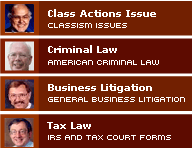
The court determined that the towns and counties failed to identify a special injury that could be compensated. It said the claim was essentially a products liability issue, and falls under the state Product Liability Act, which excludes coverage for exposure to toxic material.
A lawyer for the towns and counties, Fidelma L. Fitzpatrick, said they were considering whether to ask the court to reconsider its decision, which dismissed the last remaining claim of the lawsuit.
"It means that the New Jersey Supreme Court turned its back on lead-poisoned children of New Jersey, and they allowed the companies that profited from lead paint to turn their back on the children of New Jersey and the crisis that they created," Fitzpatrick said.
Individuals have little recourse to sue because they cannot identify which manufacturer made the paint that is on the walls of their home, Fitzpatrick said.
The paint makers praised the ruling, noting the Missouri Supreme Court had a similar decision on Tuesday.
"These companies are not responsible for risks today from poorly maintained lead paint," said Bonnie J. Campbell, spokeswoman for the paint makers and a former attorney general of Iowa.
New Jersey Public Advocate Ronald K. Chen, who had entered the case in support of the towns and counties, said the ruling was disappointing, but did recognize that landlords must maintain their properties to prevent lead paint from flaking and becoming a health hazard.
The aged housing stock in New Jersey has at least 2 million units with lead paint, Chen said. As a result, 4,547, or nearly 2.5 percent of New Jersey children under 6, had high levels of lead, compared to 1.6 percent nationally, according to the state Department of Health and Senior Services.
The lawsuit was originally filed in December 2001 by Newark, and was later joined by other towns and counties.
A trial judge had dismissed the entire lawsuit, but an appellate panel reinstated the claim charging the manufacturers with creating a public nuisance.









